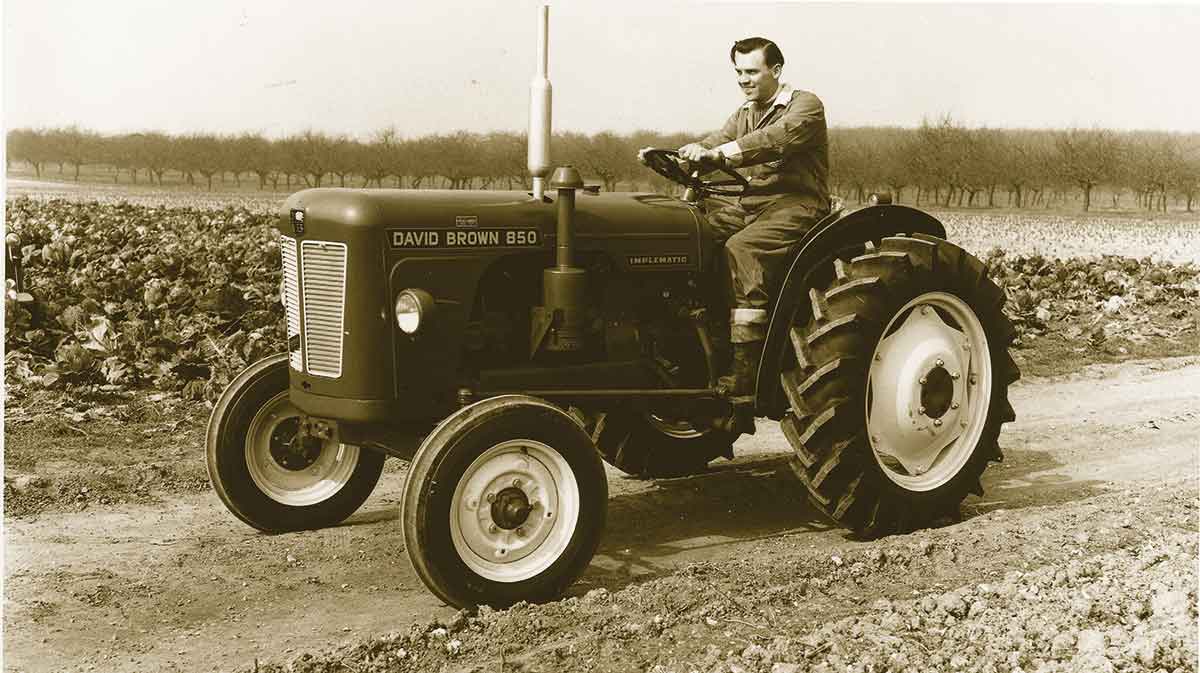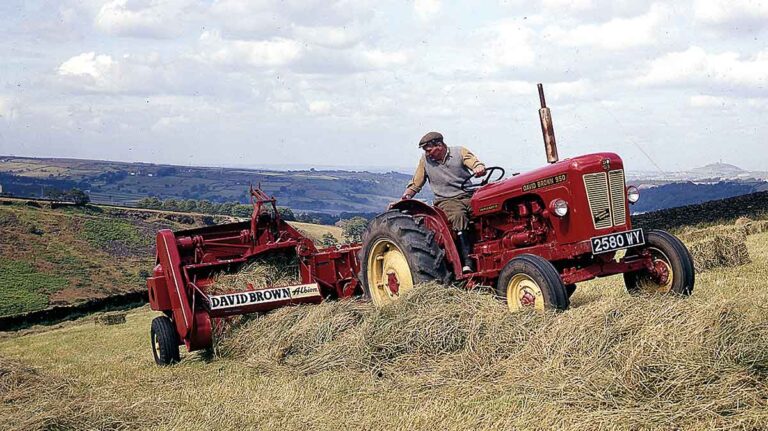David Brown started the company in Huddersfield, Yorkshire, with two employees, cutting the patterns used to make gear wheels, and the business grew rapidly as demand for gear-based transmissions for steam-powered equipment used in agriculture and manufacturing increased.
By the early 1930s the company had become one of the world’s biggest producers of transmission gears and was looking for additional products.
See also: Whatever happened to… the first driverless tractor?
The managing director, David Brown, later Sir David, the founder’s grandson, became interested in tractors during a business trip to America where he noted their increasing popularity on farms.
It was also during the early 1930s that Harry Ferguson decided to build a tractor that could be used to demonstrate the benefits offered by the implement attachment and control system he had developed to boost power farming efficiency.
Some components for the demonstration tractor, including the gearbox and parts for the steering mechanism, were supplied by David Brown’s company, bringing Harry Ferguson and David Brown into contact.
It was the start of the business partnership that took both Ferguson and David Brown into the tractor industry in 1936 when the Ferguson Type A tractor arrived, and for the David Brown company it presented problems.

Friction emerged at an early stage, caused essentially by disappointing sales for their new tractor, plus Ferguson’s resistance to making design changes requested by David Brown.
Their agreement ended early in 1939 when Ferguson formed a new and much more successful partnership with Henry Ford in America, leaving David Brown’s company with a large stock of unsold Type A tractors.
Future optimism
A new and improved David Brown tractor announced at the 1939 Royal Show encouraged future optimism, but the start of World War 2 a few weeks later brought much of Britain’s manufacturing industry under Government control, and David Brown tractor production was restricted.
A brighter future for Britain’s tractor industry, including David Brown, started when the war ended in 1945.
The worldwide switch from animal-powered farming to tractors was accelerating, and in the UK the wartime lessons about the importance of maintaining homegrown food production had not been forgotten and were encouraging investment in farm tractors and machinery.
Britain was rapidly emerging as the world’s leading tractor exporter, and British companies were at the forefront of some important technical developments such as improved diesel engine efficiency and four-wheel drive popularity.
With production volumes increasing, David Brown was soon established in third place in the UK tractor manufacturing league table, and when the company reached its centenary year in 1960 the product list included the new 850 tractor model while the 950 was in its third production year.
New paint job
While the 850 and the 950 both shared in Britain’s export success, an unusual distinction for both models was that some of the tractors were given a green and white paint finish under a contract to supply tractors to the Oliver Corporation, which was then one of the mid-range tractor companies in America.
The Oliver version of the David Brown 850 was known as the 500 model and the Oliver 600 was a David Brown 950 in disguise. British-made Oliver tractors were available in the United States and Canada for three years from 1960 with deliveries totalling almost 2,200.
Production of the 950 tractor at the David Brown factory near Huddersfield started in 1958, and almost 20,000 were built before it was replaced by the 990 model. Power options available for the 950 were a 42.5hp diesel and a 42hp petrol engine, with both engines made by David Brown.
The list of updated features compared with the previous 900 model included an improved steering mechanism, and in 1959 the 950 was available in an Implematic version, which provided depth control for mounted equipment by using either the depth wheel or draught control. Later developments introduced on the 950 included increased height clearance for the front axle and a dual-speed PTO.
The 850 Implematic model joined the David Brown range in 1960, with production totalling more than 14,000 during the next five years.
When production started customers could choose either a four-cylinder diesel developing 35hp or a petrol engine with similar output, but in an indication that spark ignition engines were losing popularity, the petrol engine was later removed from the options list to leave the 850 as a diesel only tractor.
The dual speed PTO introduced on the 950 was also added to the 850 specification.
The 850 and 950 models were among the last David Brown tractors to be finished in the company’s red or ‘hunting pink’ paint colour.
The big news on the David Brown stand at the 1965 Smithfield Show in London included the introduction of a new white and brown finish for the tractor range.
David Brown identified the colours as ‘orchid white and chocolate’, and they gave the tractor range a more distinctive appearance – although there was also some criticism that the white paint showed the dirt and needed cleaning more frequently.
David Brown’s expansion in farm equipment also included farm machinery manufacturing. In 1955 it made a successful takeover bid for the Lancashire-based Harrison, McGregor and Guest company, a prominent manufacturer of mowers, binders and balers selling under the Albion brand name.
However, evidence that financial pressures were developing was beginning to appear in the late 1960s, and in 1972 the David Brown company was bought by the American-based Tenneco organisation which had been looking for further acquisitions to add to its J I Case tractor and farm machinery business.


